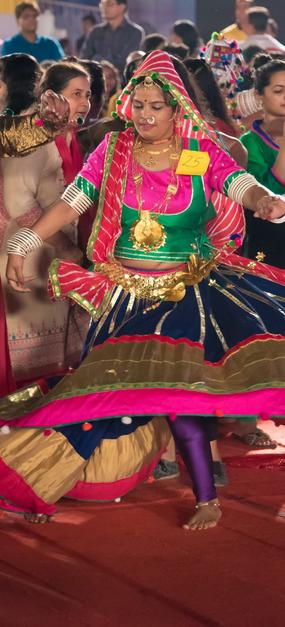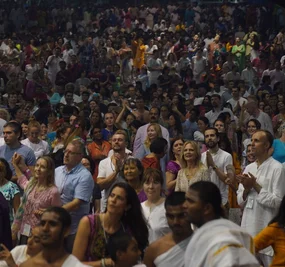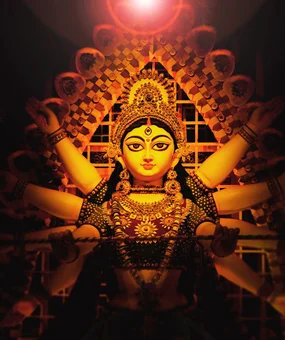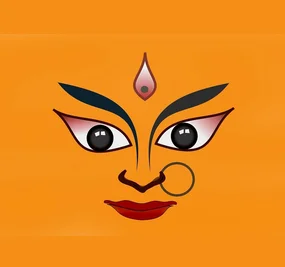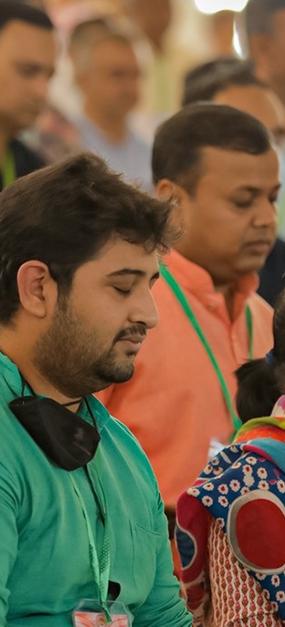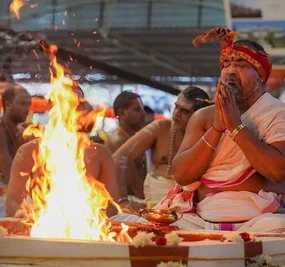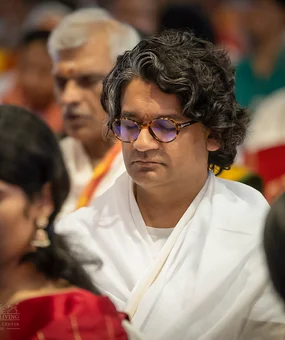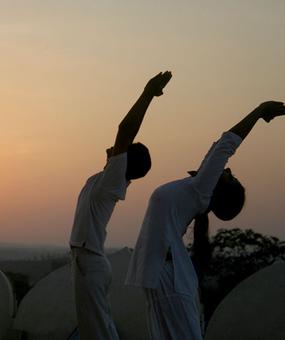I always wondered why festivals are designed to be celebrated in a specific way on a particular day of the year. Or say, for instance, why is Navratri celebrated?
Seasonal Transition
“Without insight into why we have Navratri during the change of seasons, understanding this festival would be incomplete,” shares Aruna Sareen, Faculty, The Art of Living. We celebrate Navratri four times a year as there are four seasons. Many viruses flourish during a seasonal transition when daily temperature changes happen frequently, increasing the chance of catching an illness. Observing puja, homas, fasting, garba, chanting, and singing bhajans, we show our respect to the Mother Divine or Shakti and raise our energy level to cope with the season change.
Imbibe Nine Qualities of the Navdurga
Rajni Dhawan, Faculty, The Art of Living, has given an interesting angle to the effect that Navratri has on us. You imbibe the nine divine qualities of the Goddess Durga when you praise her nine avatars with chants, bhajans, and aarti. Following are the nine forms of Devi or Navdugra:
- Shailaputri – The form of Devi who represents the highest level of consciousness and the one who grants strength.
- Brahmacharini – The celibate form of Devi who grants determination and steadfastness to her devotees.
- Chandraghanta – She represents the oneness of thoughts and emotions in our minds. The form of Devi grants clarity of mind.
- Kushmanda – She represents the manifest and unmanifest forms of the universe. The form of Devi grants well-being and intelligence.
- Skandamata – ‘Skandamata’ literally means ‘mother of Skanda’ or Karthikeya, God of War. She is the form of Devi who grants knowledge.
- Katyayani – The form of Devi who grants intuitive abilities.
- Kaalratri – The form of Devi who grants fearlessness.
- Mahagauri – The form of Dev who grants freedom and knowledge.
- Siddhidhatri – The form of Devi who grants skills or siddhis.
Overcome Obstacles on the Path of Yoga
Swami Harihara, Faculty, The Art of Living shares how Navratri helps one to overcome the nine obstacles on the path of yoga. These obstacles have been described in chapter 1, verse 30 of Patanjali Yogasutras.
व्याधि स्त्यान संशय प्रमादालस्याविरति भ्रान्तिदर्शना लब्धभूमिकत्वानवस्थितत्वानि चित्त विक्षेपास्तेऽन्तरायाः॥३०॥
vyadhi-styana-samsaya-pramada-alasya-avirati-bhrantidarsana-alabdhabhumikatva-anavasthitatvani citta-viksepah-te-antarayah
Physical illness, mental illness, doubts, carelessness, laziness, overindulgence, illusion, non-attainment of yogic states, failure to maintain a yogic state are the obstacles to Yoga.
1. Removes physical illness
The practice of garba, fasting and chanting in the Navratri puja, improves your body’s immune system, helping to keep diseases away. A light stomach during fasting helps the system to heal itself. The stretches in Garba enhance body flexibility. Homa and medicinal herbs used as ahuti (offering) help to heal many mental and physical illnesses.
2. Uproots mental discomfort and illness
Celebrations in Navratri such as pujas, homas, chants, meditation, garba and other cultural activities uplift the mood, interest and enthusiasm, helping to uproot any illness in the mind.
3. Clears away doubts
When the satva in your body increases with fasting and singing bhajans, you get clarity of mind and there is no room for doubts.
4. Rid of carelessness
Navratri puja is performed with reverence and devotion to the Mother Divine, which takes care of this obstacle. The skill of doing the right thing at the right time dawns on you.
5. Overcome laziness
Garba dance attracts people from all age groups so much that laziness just disappears. The inertia of the mind vanishes with the devotional wave of garba. Healthy fasting repairs your cells to make you stronger and more vibrant. Mahishasura was the epitome of pramada and alasya. Mahisha means buffalo representing inertia. Intense activities of pujas and homas with sadhana remove inertia.
6. Prevents overindulgence
Rajas gets balanced with the rigorous physical movements in garba. Fasting helps establish a meditative state of mind. Mantra chanting and meditative silence during the festival help kindle wisdom. All of these, in combination, stop you from overindulgence in sensory pleasure.
7. Diminishes illusion
Mother Divine is herself the cause of bhranti or illusion of the universe. She is known as Mahamaya. In Devi Mahatmya, she is mentioned as a form of illusion, ‘ya Devi sarva bhuteshu bhranti rupena samsthita’. Mother Divine blesses you when you pray to Her to remove the false illusions of your mind and eventually be free from the illusions of mundane existence. The Navratri celebrations are high on energy and there is no space left for illusory thinking of the mind. Meditating during the mantra chantings in a Puja is a good way of settling the mind and clearing it from unrealistic perceptions.
8. Move on from non-attainment of yogic states
It is said, “Perfection in practice happens when you continue to practice with sincerity and respect for a long period without any interruption.” A period of uninterrupted nine days of Navratris is an opportunity to perfect your spiritual practice and attain higher awareness.
9. Overcome the failure to maintain equanimity
The activities during Navratri, such as fasting, help detoxify our bodies, bring stability to our mind and boost our willpower. You get inspired to continue your spiritual practices without failure. This way you attain new heights in your life.
The obstacles described by Rishi Patanjali are not just hurdles on the path of Yoga, but hurdles in life too. By the end of the ninth day of Navratri, these obstacles drop off when you feel connected to the supreme power and attain a higher state of bliss and tranquility.
Based on inputs by Swami Harihara, Aruna Sareen and Rajni Dhawan, Faculty, The Art of Living.
Inspired by Gurudev Sri Sri Ravi Shankar’s wisdom talks
Written by: Pratibha Sharma
Related links
9 Forms of Durga by Gurudev Sri Sri Ravi Shankar



